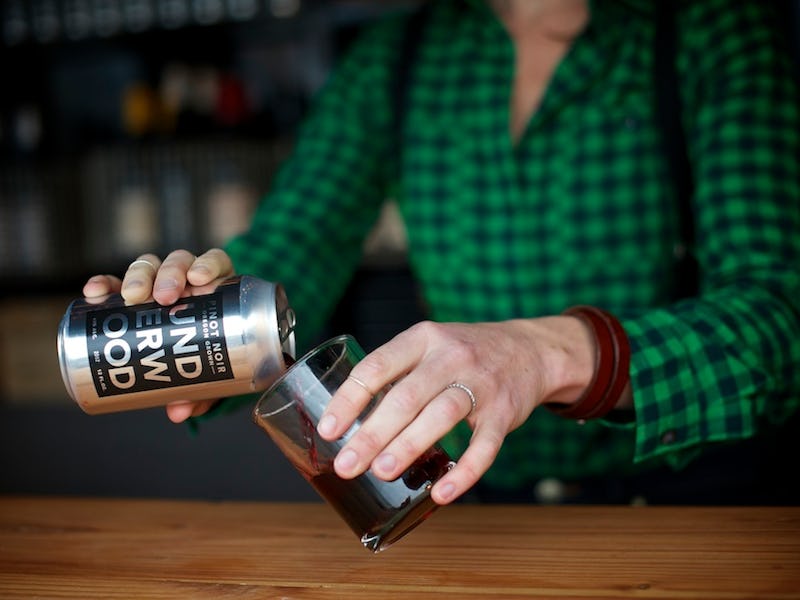Beerification Has Arrived and We Can All Drink Canned Wine and Chill Out
With canned wine, reformed snobs find their chill.

Ryan Harms was sick of packing glassware. All the man behind Underwood canned wine wanted to do was enjoy the mountain lakes and pristine beaches of his native Oregon while tossing back some Pinot Noir. But no one touts stemware into the backcountry: To do so would be to become a representative of all that is pretentious and ridiculous. Harms didn’t want that. He want to be like the craft beer enthusiasts, who nerd out over sophisticated drinks in the most casual settings. Wine drinkers, he thought, needed to find that chill. Thus, the “beerification” movement was born.
“There are places where it’s not ideal to take glass along,” Harms tells Inverse. “That often means that wine doesn’t get to go on those adventures.” But the barriers he’s talking about are as much physical as they are cultural and historical. Wine doesn’t travel well because we’ve never allowed it to — or perhaps it’s because we never thought it would let us. With all its varietals and vintages, wine, swirling with esoterica, is an intimidating thing — the Olivia Pope to beer’s Abbi Abrams — that an entire population of potential wine drinkers has psyched themselves out of enjoying casually. It’s led to one of the wine industry’s major issues: Reaching a demographic that’s both interested and afraid.
“People saying ‘I don't have the education to drink wine’ seems like the most ridiculous thing.”
As the vintner and owner of Union Wine Co., which produces the Underwood cans, Harms is in the unique position to approach wine with both reverence and impertinence and thereby shepherd a new generation of drinkers into what he calls the wine space. “People saying ‘I don’t have the education to drink wine’ seems like the most ridiculous thing,” he says, “But I totally understand that.”
By offering up cans of Pinot Gris and Rosé alongside IPAs and pale pilsens, he hoped beer’s approachability would rub off. “We don’t want to be asking, ‘Am I holding the glass right?’ or ‘Do I look like I know what I’m doing?’ or ‘Do I sound sophisticated?’” Harms says. “We asked, how do we bring some of the elements from the beer industry into wine so that, when we’re sitting there, enjoying some wine, we’re not overthinking it?”
His approach worked; Underwood’s cans were picked up by grocery stores like Trader Joes and Whole Foods as well as higher-end wine shops. Harms, who admits he had low expectations for his project — he was just “making wine we’d all take camping” — chalks up the campaign’s success to two fundamental truths: People want to drink wine on the go, and, more importantly, people hadn’t yet thought of all of the places they’d like to drink wine on the go.
Moviegoers, subway riders, and ferry commuters are just some of the people who make up his growing customer base, he says, admitting that he had grossly underestimated the demand for portable wine. “I never realized until I had kids that when you see adults walking around on Halloween with what look like travel mugs, the likelihood is not very high that it’s coffee.”
But the democratization of wine is not equivalent to its degradation. Harms is, first and foremost, a vintner; as such, he���������������������s hyperaware that he’s created a category of wine that, if he and his peers aren’t careful, could invite parallels to two-buck chuck or, worse, the classic crappy can of PBR. “We have to put good-quality stuff in,” he says. “This is just a packaging alternative. We’re a wine company.”